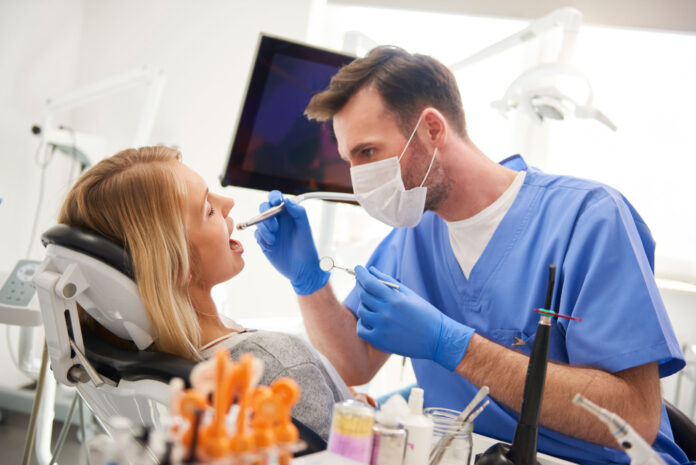Dentistry, like many different fields, is continuously evolving. Advancements in era, substances, and techniques are shaping the destiny of dental care.
In this text, we will explore the contemporary traits and technology that might be revolutionizing dental treatments, enhancing patient outcomes, and reshaping the destiny of dentistry.
Digital Dentistry
Digital dentistry encompasses quite a number of technologies which are transforming the way dentists diagnose, plan, and perform remedies.
One of the important technologies in digital dentistry is the use of three-D imaging strategies inclusive of cone beam computed tomography (CBCT) and intraoral scanners.
These technologies permit for greater correct prognosis and treatment-making plans, as well as the creation of custom dental restorations and the usage of computer-aided design and production (CAD/CAM) generation.
Teledentistry
Teledentistry is a particularly new fashion that has been increased through the COVID-19 pandemic.
It involves the use of telecommunication technology to provide dental care remotely. Through teledentistry, dentists can conduct virtual consultations, reveal patients’ oral fitness, and offer steerage on oral hygiene practices.
This trend is especially beneficial in rural or underserved regions in which the right of entry to dental care can be restricted. With a focus on patient comfort and satisfaction, Cumberland Dental strives to create a welcoming and relaxing environment for all patients, making each visit a positive and stress-free experience.
Minimally Invasive Dentistry
Minimally invasive dentistry focuses on preserving as much of the natural teeth structure as feasible while nonetheless attaining the favored remedy final results.
This method is based on early diagnosis, conservative treatment alternatives, and the use of advanced substances together with dental lasers and air abrasion systems.
Minimally invasive dentistry reduces affected person soreness, preserves healthful teeth structure, and may lead to faster healing times.
Biomimetic Dentistry
Biomimetic dentistry is stimulated through nature and objectives to mimic the natural shape and characteristics of teeth.
This method specializes in restoring teeth in a way that replicates their herbal strength and appearance, the use of substances that carefully resemble natural tooth shape.
Biomimetic restorations are greater durable and long-lasting compared to traditional fillings and crowns, and they require less enamel preparation.
Laser Dentistry
Lasers are increasingly being used in dentistry for loads of treatments, which includes cavity detection, gum sickness treatment, and soft tissue surgeries.
Laser dentistry offers several blessings over conventional strategies, such as reduced aches, quicker recuperation instances, and less need for anesthesia.
As the era continues to enhance, lasers are expected to play a fair large position in the destiny of dental care.
Regenerative Dentistry
Regenerative dentistry has the specialty of restoring damaged or lost dental tissues through the usage of biological substances and techniques.
This technique targets to regenerate dental pulp, dentin, and other tissues to restore and repair enamel suffering from decay, trauma, or sickness.
Regenerative dentistry has the capability to revolutionize the treatment of dental issues, supplying more natural and lengthy-lasting solutions compared to conventional restorative strategies.
Augmented Reality (AR) and Virtual Reality (VR)
AR and VR technologies are being utilized in dentistry to beautify the patient experience and enhance treatment consequences.
These technologies may be used to create digital models of sufferers’ mouths, simulate treatment consequences, or even manual dentists throughout strategies. AR and VR can help patients better understand their treatment alternatives and alleviate anxiety about dental processes.
Artificial Intelligence (AI) in Dentistry
AI is an increasing number of being integrated into dental practice management systems to streamline workflows, enhance diagnostic accuracy, and beautify remedy planning.
AI algorithms can analyze scientific pix, affected personal information, and different statistics to offer dentists valuable insights and hints.
AI has the capability to revolutionize the way dentists practice, making dental care greater, efficient, correct, and personalized.
Conclusion
The future of dentistry is thrilling, with advancements in generation and techniques promising to enhance patient care and effects.
Digital dentistry, teledentistry, minimally invasive dentistry, biomimetic dentistry, laser dentistry, regenerative dentistry, AR and VR, and I are just a few of the tendencies and technologies that are shaping the future of dental care.
By embracing these improvements, dentists can provide greater effective, efficient, and snug treatments, making sure a brighter smile for generations to return.




